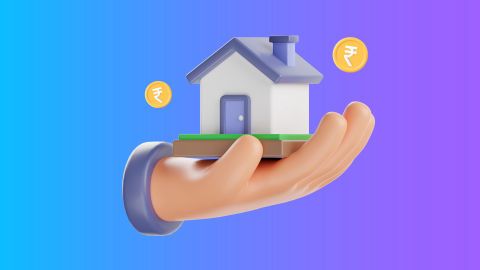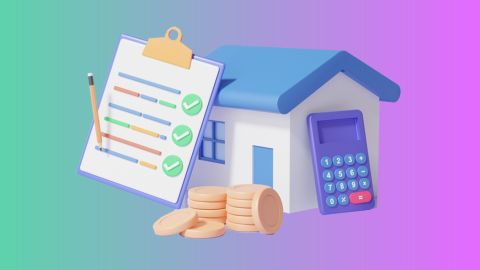Navigating the financial landscape of property mortgages can be complex, especially with various mortgage types available. One such type is the usufructuary mortgage, a concept that might seem intricate but offers unique benefits for both borrowers and lenders. Understanding its features and implications can help you make an informed decision when considering financial solutions like Bajaj Finserv Loan Against Property.
In this article, we will explore the definition of usufructuary mortgage, its key features, and the process of establishing one. We will also discuss the rights and responsibilities involved, the benefits, and important considerations before opting for a usufructuary mortgage. Finally, we will compare it with other types of mortgages to give you a comprehensive understanding of where it stands. This knowledge will empower you to make the right choice when leveraging property for financial gains, potentially through Bajaj Finserv Loan Against Property.
What is a usufructuary mortgage?
A usufructuary mortgage is a type of mortgage in which the borrower transfers possession of the property to the lender until the loan is repaid. The lender, in return, enjoys the income generated from the property, such as rent or profits, but does not own the property outright. This arrangement ensures that the lender's interests are secured while the borrower retains ownership, subject to the conditions of the mortgage.
Key features of usufructuary mortgage:
- Transfer of possession: The property possession is transferred to the lender.
- Income rights: The lender has the right to enjoy the income from the property.
- Non-sale clause: The lender cannot sell the property but holds it until the debt is repaid.
- Ownership retained: The borrower retains ownership of the property.
- Fixed tenure: The mortgage is for a specific period agreed upon by both parties.
Process of establishing usufructuary mortgage:
Establishing a usufructuary mortgage involves several steps to ensure legal and financial clarity.
- Agreement drafting: Both parties draft a detailed mortgage agreement.
- Valuation of property: The property is assessed for its value and income potential.
- Registration: The mortgage agreement is registered with the relevant authorities.
- Transfer of possession: The borrower transfers possession of the property to the lender.
When considering a mortgage property, it is essential to understand all aspects, including loan against property fees and charges, which can be detailed in the Bajaj Finserv Loan Against Property offerings.
How does a usufructuary mortgage work?
- Transfer of property rights: In a usufructuary mortgage, the borrower (mortgagor) transfers the right to use the property’s income or profits to the lender (mortgagee) as collateral for a loan.
- No transfer of ownership: Unlike other types of mortgages, the lender does not take ownership of the property. The mortgagor retains ownership but allows the lender to use the property’s income.
- Loan secured by property: The loan is secured by the property, and the mortgagor typically cannot sell or transfer the property during the mortgage term unless the loan is repaid.
- Duration and repayment: The mortgage continues until the borrower repays the loan. The lender has no right to demand repayment but can use the property's income to recover the loan.
- Income from property: The lender benefits from the income generated by the property, such as rents, crops, or profits, while the borrower retains the right to possess the property.
- Legal framework: This type of mortgage is governed by Section 58 of the Indian Transfer of Property Act, 1882, which defines and regulates usufructuary mortgages.
- Risk for borrower: Since the mortgagor cannot sell the property or fully enjoy the benefits, the borrower must ensure they can repay the loan before defaulting.
Comparison with other types of mortgages:
Feature |
Usufructuary mortgage |
Simple mortgage |
English mortgage |
Ownership |
Retained by borrower |
Retained by borrower |
Transferred to lender |
Possession |
Transferred to lender |
Retained by borrower |
Retained by borrower |
Income rights |
Lender enjoys income |
Borrower enjoys income |
Borrower enjoys income |
Sale rights |
Lender cannot sell |
Lender can sell |
Lender can sell |
Primary use |
Income-generating properties |
Various property types |
Property sold in case of default |
A usufructuary mortgage offers a balanced approach for borrowers and lenders, securing the loan through possession while allowing income utilisation. It is crucial to weigh the benefits and considerations before deciding. For those seeking financial solutions leveraging property, Bajaj Finserv Loan Against Property provides a reliable and efficient option. By understanding usufructuary mortgages, you can make an informed choice that aligns with your financial goals and property plans.
Rights and responsibilities
In a usufructuary mortgage, both the borrower and the lender have specific rights and responsibilities:
- Lender’s rights: The lender has the right to enjoy the property’s income and ensure its maintenance.
- Borrower’s responsibilities: The borrower must ensure that the property remains in good condition and is returned as per the agreement.
Benefits of usufructuary mortgage
- Secured loan: Provides security to the lender through possession.
- Income utilisation: The lender benefits from the property's income.
- Retention of ownership: The borrower retains ownership and future rights.
- Non-dispossession: The lender cannot sell the property, ensuring future recovery for the borrower.
Considerations before opting for a usufructuary mortgage:
Before opting for a usufructuary mortgage, consider the following:
- Property income potential: Ensure that the property generates sufficient income to cover the loan interest.
- Legal implications: Understand the legal responsibilities and rights under the mortgage.
- Future plans: Consider long-term plans for the property and its potential return.




